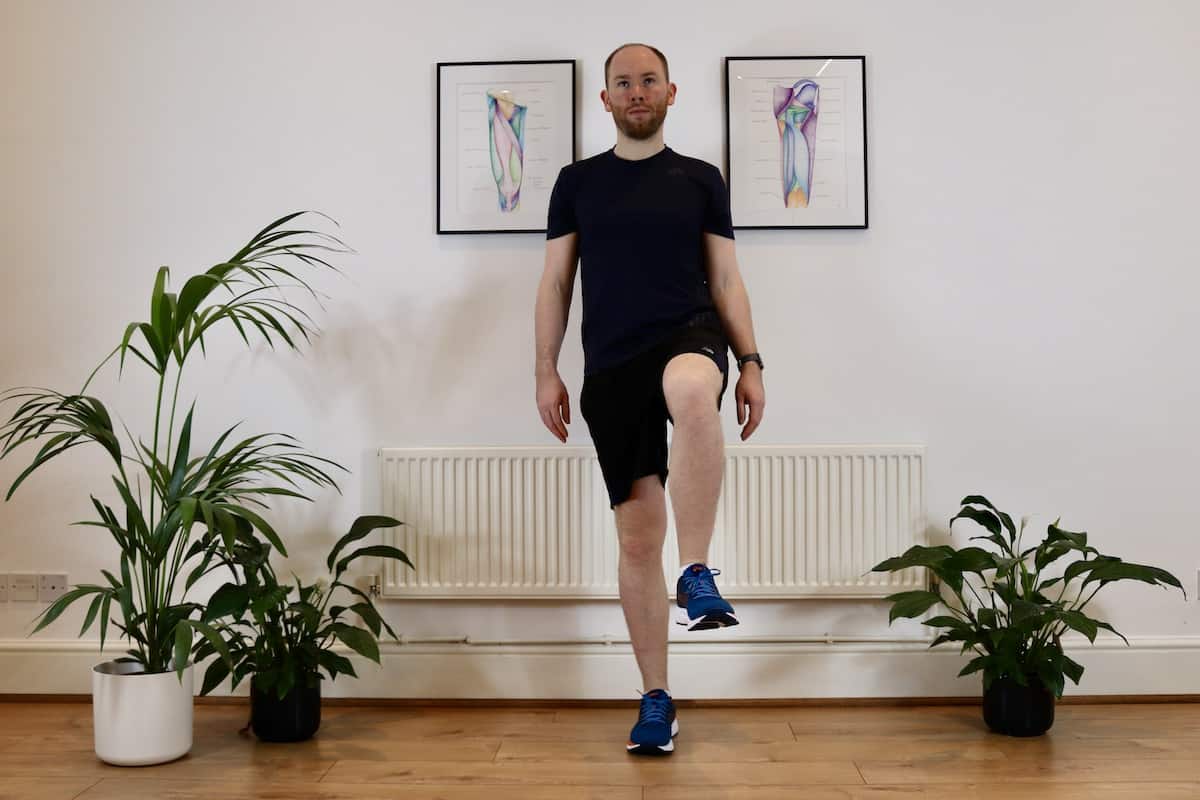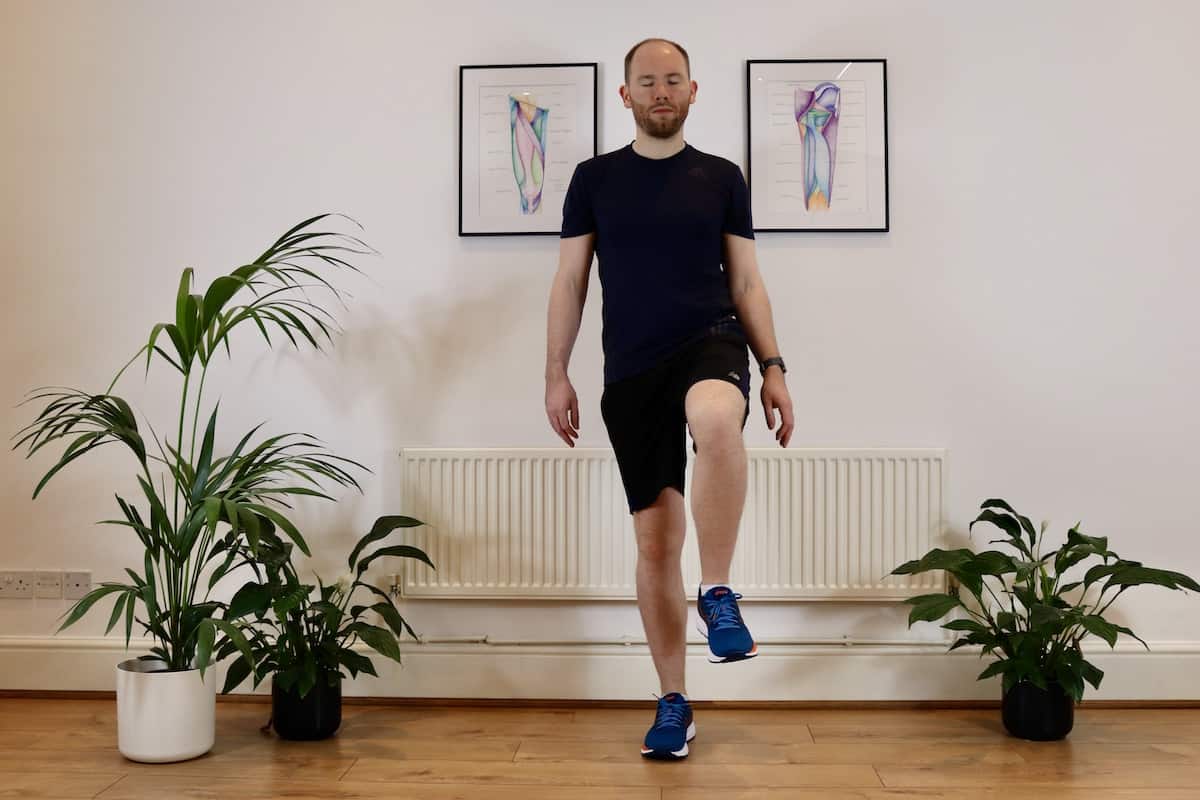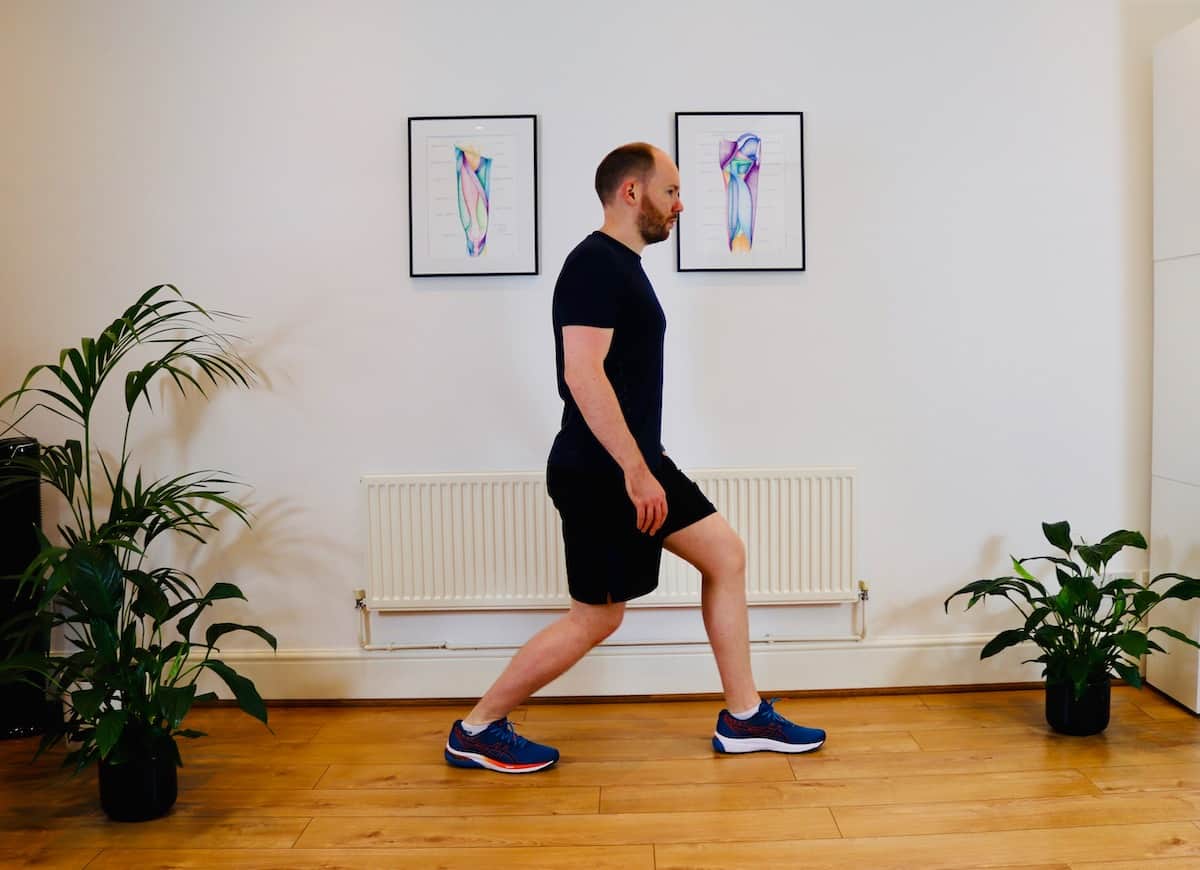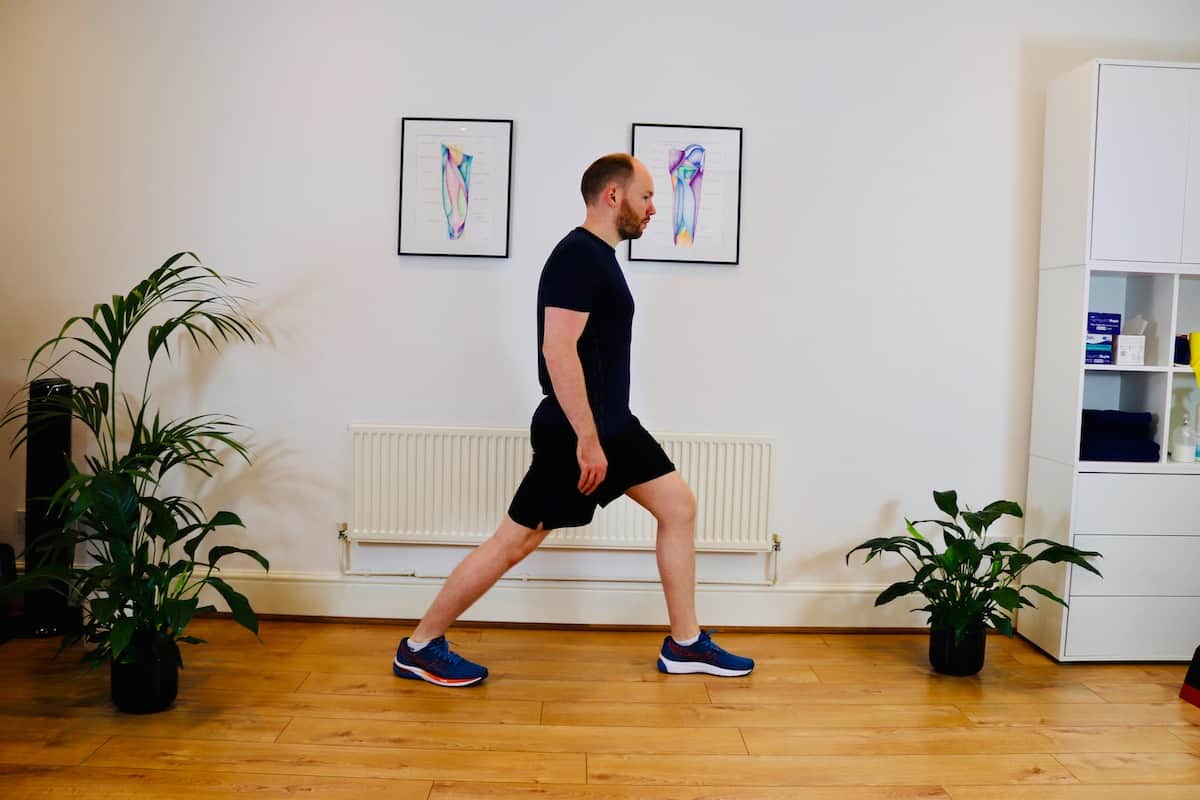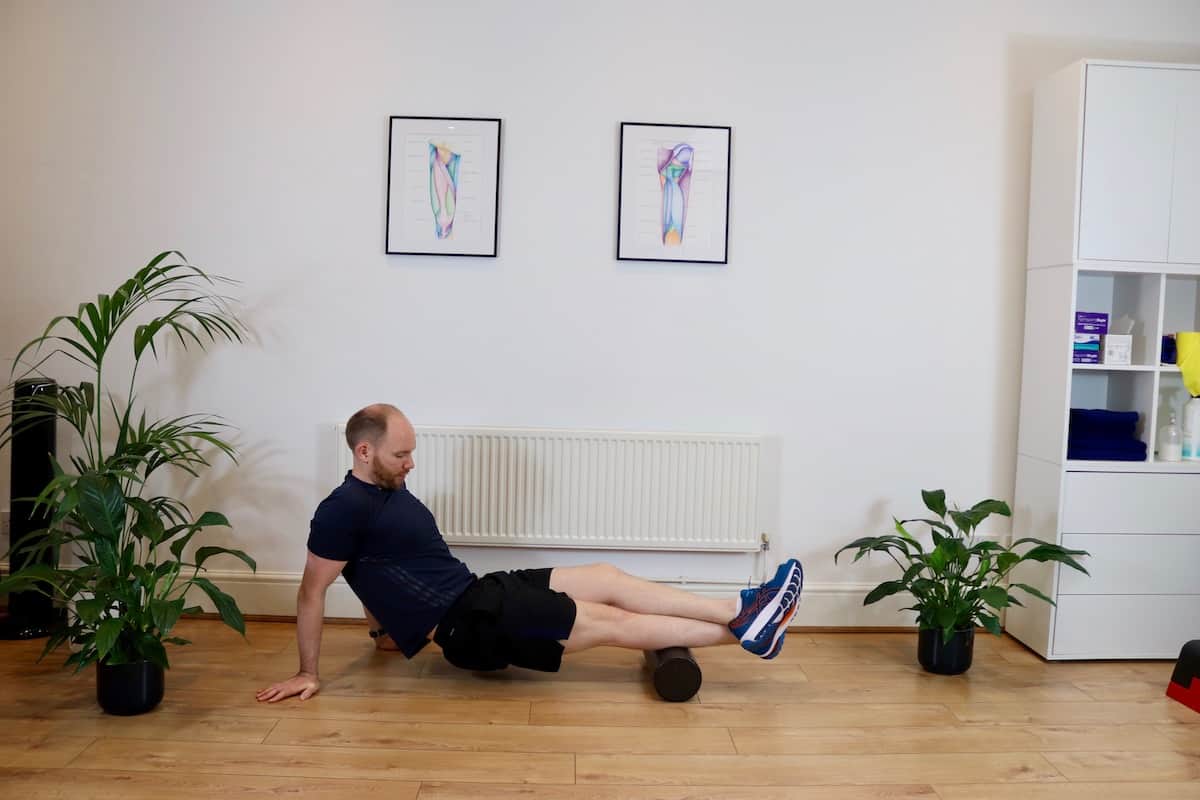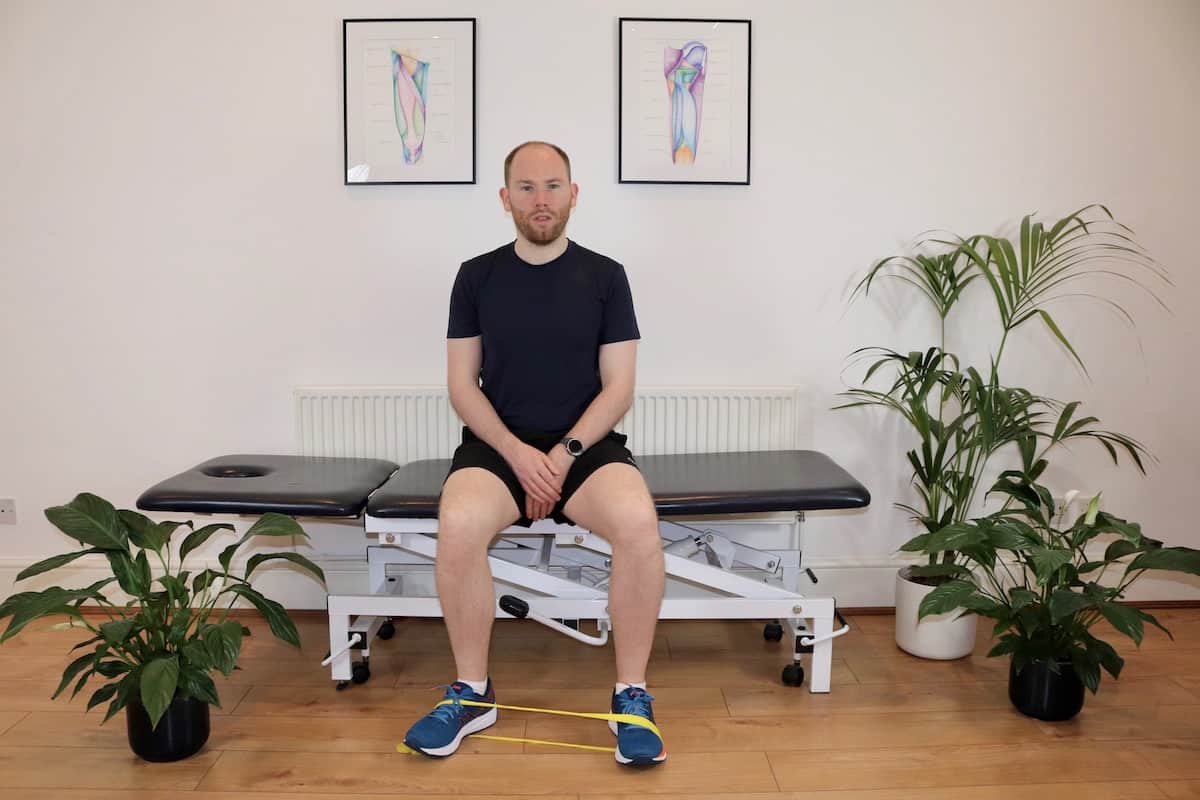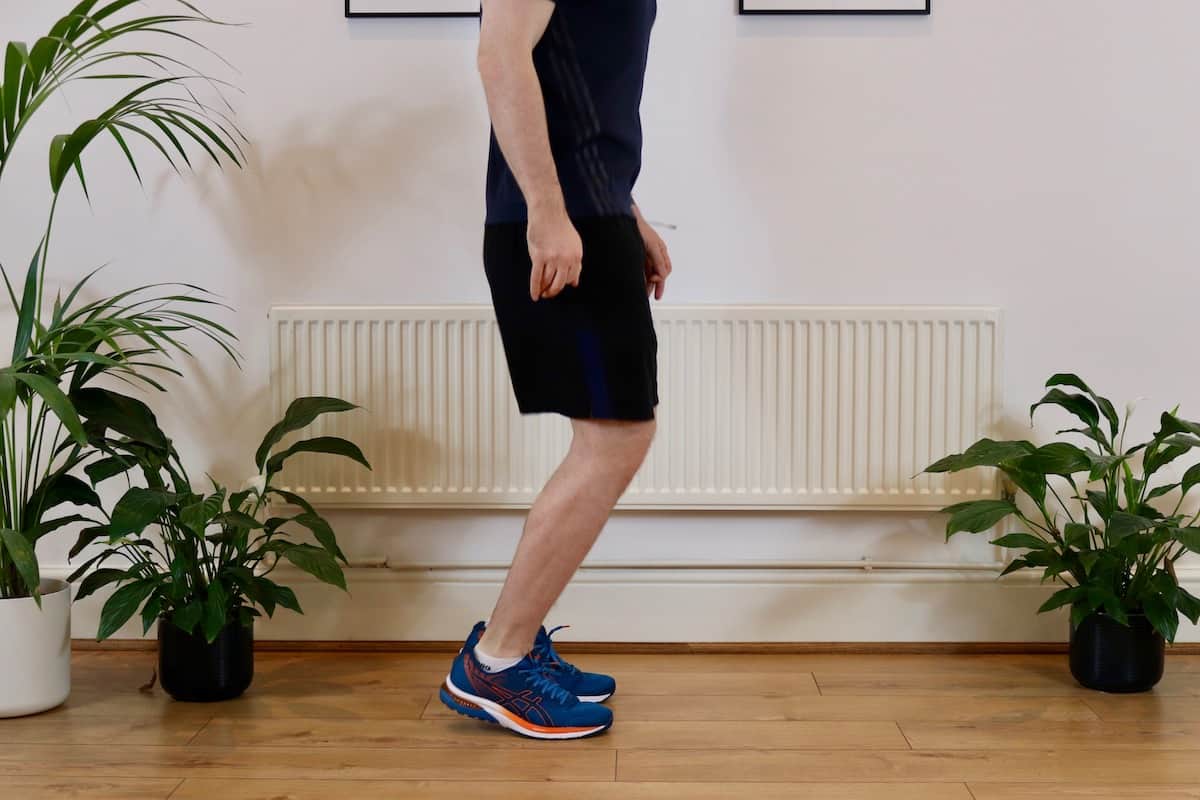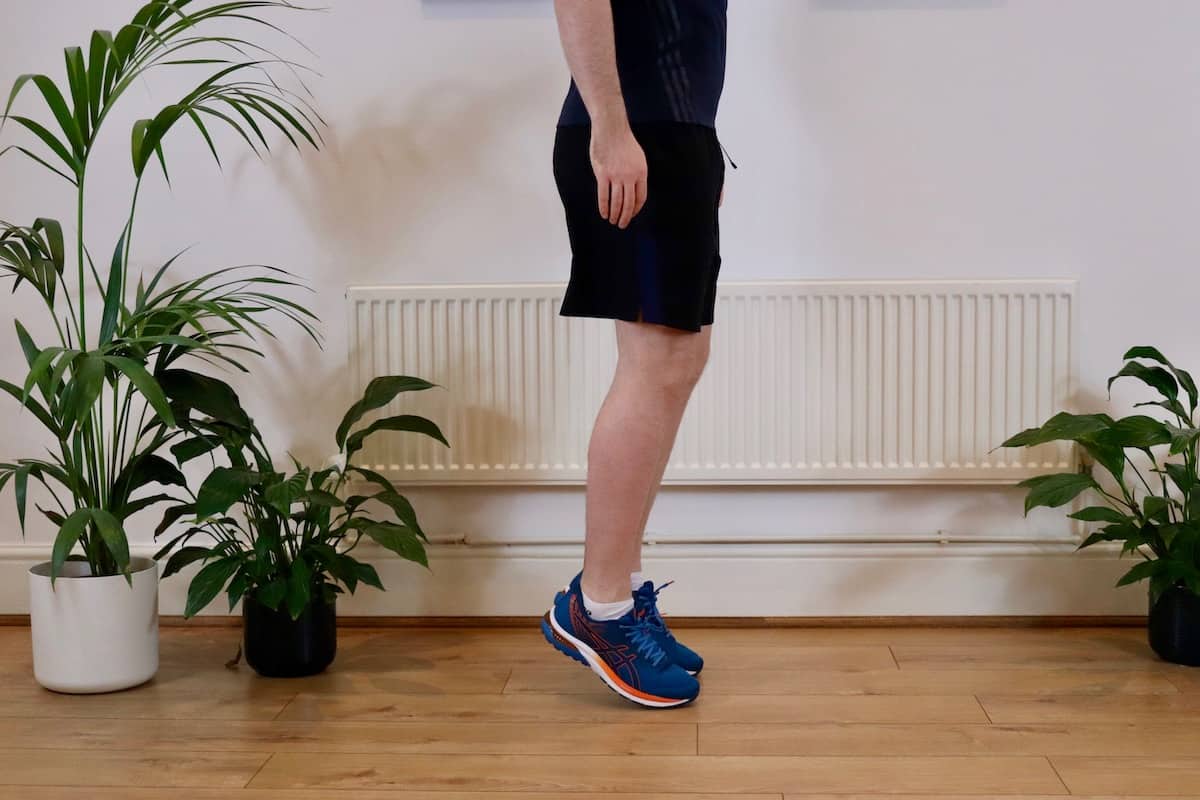James McCormack is a Knee, Foot and Ankle Specialist Physiotherapist with over 10 years experience.
Alongside his clinical work he has created this website to provide free-to-read content for it's users.
Latest posts by James McCormack
(see all)
A sprained ankle is one of the most common conditions that cause musculoskeletal pain. There are varying levels of severity of ankle sprain and in this article, we will cover early-stage rehabilitation exercises that can be used for each type of sprain. Exercises for ankle sprains should be pain dependent, it is not a scenario of more pain equals gain, rather each exercise should be pain-free to do.
Balance Exercises For A Sprained Ankle
Single-Leg Balance: Eyes Open
- Stand on one leg with your foot flat on the floor
- Hold your opposite leg out in front
- Focus on a point in front of you to help with stability
- Hold for 60 seconds
- Repeat 3-4 times daily.
Single-Leg Balance: Eyes Closed
- Stand on one leg with your foot flat on the floor
- Hold your opposite leg out in front
- Close your eyes while maintaining this position
- Hold for 60 seconds
- Repeat 3-4 times daily.
Stretching Exercises for a Sprained Ankle
Soleus Stretch Standing
- Stand upright with the affected leg behind you
- Bend the back leg while keeping your heel on the floor
- Stop and hold when you feel a pull on the back of your leg
- Hold for 45 seconds
- Repeat 3-4 times daily.
Standing Gastrocnemius Stretch
- Stand upright with the affected leg behind you
- Keep the knee straight on the leg behind with a slight bend on the knee in front
- Move forward on the front leg while keeping both heels on the floor
- Stop moving forward once you feel a stretch on the back leg
- Hold for 45 seconds
- Repeat 3-4 times daily.
Foam Rolling the Calf Muscles
- Sitting on the floor place your calf on the foam roller
- Place your unaffected leg on top
- Use your hands to lift your hips off the floor
- Move back and forward on the foam roller over the calf muscle
- Repetition: 1-2 minutes
- Frequency: 2-3 times daily.
Strengthening Exercises for a Sprained Ankle
Posterior Tibial Muscle Strengthening
- In a seated position, place the affected ankle over the opposite knee
- Place a band around both feet
- Point the toes of the affected foot and lift them against the band’s resistance.
- Slowly return to your starting position to complete one repetition
- Band Colour: Yellow
- Repetitions: 15
- Sets: 3
- Frequency: Once daily
Peroneal Muscle Strengthening
- In a seated position, place both feet flat on the floor
- Place a band around both feet. Turn the affected foot outwards (eversion) against the resistance of the band
- Slowly return to your starting position to complete one repetition
- Band Colour: Yellow
- Repetitions: 15
- Sets: 3
- Frequency: Once daily
Soleus Muscle Strengthening
- Stand upright with both knees bent
- Maintain the bend in your knees while lifting your heels off the floor
- Slowly return to your starting position to complete one repetition
- Repetitions: 25
- Sets: 3
- Frequency: Once daily
Gastrocnemius Strengthening Exercise
- Stand upright with your knees straight
- Maintain this knee position while lifting both heels off the floor
- Slowly return to your starting position to complete one repetition
- Repetitions: 25
- Sets: 3
- Frequency: Once daily
Physiotherapy with James McCormack
This article is written by James McCormack, a Lower Limb Specialist who is an expert in treating Ankle Sprains.
This is not medical advice. We recommend a consultation with a medical professional such as James McCormack if you are experiencing any of the symptoms discussed in this article. James offers Online Physiotherapy Appointments weekly and face-to-face appointments in his London clinic.
